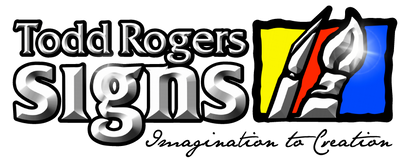What Are Pantone Colours and Why Do We Use Them?
Hey there, colour enthusiasts! 🎨 Ever wondered what those fancy Pantone colours are all about and why they're such a big deal in the design world? Well, buckle up, because we're about to dive into the vibrant world of Pantone and discover why these colours are a designer's best friend.
What Are Pantone Colours?
First things first, let's break it down. Pantone colours come from the Pantone Matching System (PMS), which is basically the ultimate colour bible for designers. Think of it as the Rosetta Stone of colours. Pantone created this system to ensure that colours are consistent and accurate, no matter where or how they're printed.
Imagine you’re designing a logo, and you want the exact same shade of blue to appear on business cards, t-shirts, and billboards. Without a standardised system, that blue could end up looking like fifty shades of... well, not what you wanted. Enter Pantone! Each colour in the Pantone system has a unique code, so you can be sure that Pantone 2935 C is the same vibrant blue everywhere.
Why Do We Use Pantone Colours?
Now that we know what Pantone colours are, let's talk about why we use them. Spoiler alert: it's not just because they sound fancy!
1. Consistency is Key
One of the biggest reasons we use Pantone colours is for consistency. Whether you're printing in Tokyo or Toronto, Pantone ensures that your colours look the same. This is crucial for branding. Imagine Coca-Cola's red looking different on every can—yikes! Pantone keeps your brand colours consistent across all mediums.
2. Precision and Accuracy
Pantone colours are all about precision. When you pick a Pantone colour, you know exactly what you're getting. This accuracy is essential for designers who need to match colours perfectly. No more guessing games or "close enough" matches. With Pantone, you get the exact shade you need.
3. Wide Range of Colours
Pantone offers a mind-blowing range of colours. From the brightest neons to the subtlest pastels, there's a Pantone colour for every project. This extensive palette allows designers to get creative and find the perfect hue for any design.
4. Industry Standard
Pantone is the industry standard for colour matching. It's used by designers, printers, and manufacturers worldwide. When you specify a Pantone colour, everyone involved in the production process knows exactly what you're talking about. This universal language of colour makes communication and collaboration a breeze.
5. Inspiration and Trends
Pantone isn't just about matching colours; it's also about setting trends. Every year, Pantone announces a "Colour of the Year," which influences design trends across various industries. From fashion to interior design, Pantone's Colour of the Year sets the tone (pun intended) for what's hot and happening.
Conclusion
So, there you have it! Pantone colours are more than just a pretty palette—they're a vital tool for ensuring consistency, precision, and creativity in design. Whether you're a seasoned designer or just starting out, understanding and using Pantone colours can take your projects to the next level.
Next time you're working on a design, remember the power of Pantone. It's like having a secret weapon in your creative arsenal. Happy designing, and may your colours always be spot on!



